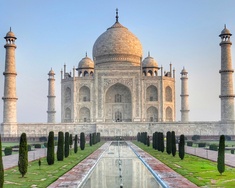
Every 1M City in India - Explained! (Part 3)
First published: Friday July 16th, 2021
Report this blog
Introduction
India has 55 Urban Areas with at least 1 Million people. In this series, I will tell you a bit about all of them. This is part 3, and we will get into some more obscure cities this time.
Chandigarh (चंदीगढ)
• Population: 2.425 Million
• Local Language: Hindi/Punjabi
• Subdivision: Chandigarh (Union Territory)
• Pronunciation: CHUN-dhee-gud
• Etymology: From Chandika, a form of the Hindu goddess Parvati, and Garh (pronounced Gad), meaning fort.
Chandigarh is interesting. It's a planned city in India designed by a Swiss-French architect that is part of its own union territory that it is the capital of but is also the capital of Punjab and Haryana even though it's not part of them and also its emblem is this weird open hand thingy. Okay, let me explain a bit.
After the Partition of India and Pakistan, Punjab's capital, Lahore, became part of Pakistan, leaving Indian Punjab without a capital. This is why the planned city of Chandigarh was constructed, as a capital for Punjab. It was meant to be a beautiful city, and is still known as the city of beauty. The city was first designed by Albert Mayer, but after he stopped work on it, it was continued by Le Corbusier, a famous Swiss-French architect. The city was made the capital in 1953. In 1966, the southern part of Punjab, where Haryanvi, which is more similar to Hindi, is spoken, became the separate state of Haryana, while the northern portion which spoke Punjabi remained as Punjab. Chandigarh was in between these 2, and so was made it's own Union Territory, that governed itself, but also the states of Punjab and Haryana even though it wasn't in either of those states 🤯
And the Open Hand symbol I talked about (it's copyrighted, so you can look it up) was also Le Corbusier's idea. There's even a monument of it in the city.
Now that I'm done with history, finally I can get to the city itself. As a bridge between Haryana and Punjab, both Hindi and Punjabi are common languages.
The city is divided by a grid into many sectors, and has many gardens and parks. There's also the Sukhna lake park in the northeastern part, but the most interesting thing about the city is its history and layout.
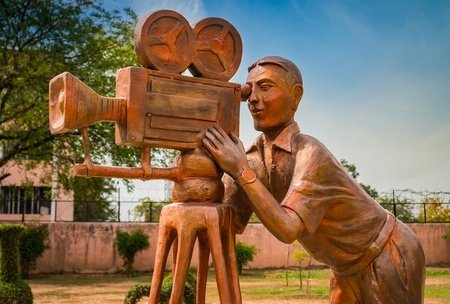
Agra (आग्रा)
• Population: 2.35 Million
• Local Language: Hindi
• Subdivision: Uttar Pradesh (State)
• Pronunciation: AH-grah
• Etymology: There is no clear etymology, but the most accepted theory is that it comes from Agar, the Hindi word for salt pan, since salt used to be made there.
Agra is a city in Uttar Pradesh on the Yamuna river. It served as the capital of the Mughal Empire for many years, and it was an important city. It has monuments such as the Agra Fort, Akbar's Tomb, and many more Mughal sites. It is part of the Golden Triangle circuit along with Jaipur and Delhi. It was also a city that was important in the 1857 Uprising. It's also near the Mughal city of Fatehpur Sikri.
Oh yeah I think there was also a thing here called the Taj Mahal? I just heard of it, I don't think many people know about it but it's pretty cool i guess maybe people should talk about it more.
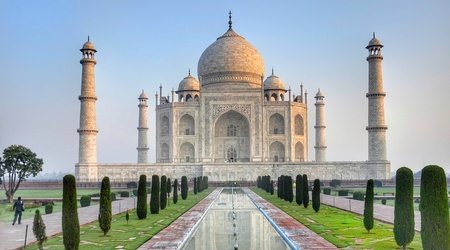
Vadodara (વડોદરા)
• Population: 2.25 Million
• Local Language: Gujarati
• Subdivision: Gujarat (State)
• Pronunciation: va-DOH-dhuh-rah
• Etymology: A corrupt form of Vatodar, meaning in the belly of the banyan tree.
Vadodara is the 3rd largest Gujarati city, located in between Ahmedabad and Surat. Formerly known as Baroda, Vadpatra, and Chandravati, it also has nicknames like Sanskari Nagari, or Cultural City, and Kala Nagari, or City of Art. The city is located on the Vishwamitri river and very close to the larger Mahi river.
Vadodara developed a lot under Sayajirao Gaekwad III, the king of Baroda in the late 1800s and early 1900s, making Vadodara an industrial center today, producing textiles, chemicals, and oil. Vadodara's Bank of Baroda is also one of the most popular banks in India.
As for historic sites, Vadodara is home to the huge Lakshmi Vilas Palace in the center, a palace of the Gaekwad royal family. They have the Sayaji Baug Zoo and Baroda museum, as well as monuments such as the Kirti Stambh and Mandvi Gate.
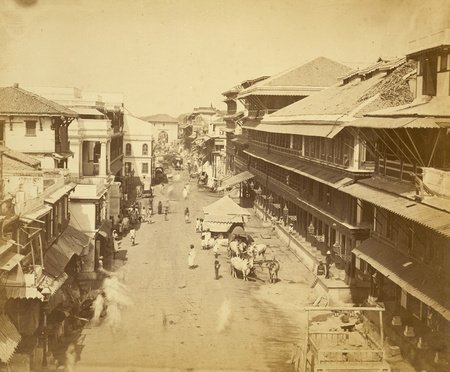
Visakhapatnam (విశాఖపట్నం)
• Population: 2.25 Million
• Local Language: Telugu
• Subdivision: Andhra Pradesh (State)
• Pronunciation: just call it Vizag... (If you really want it, vish-AH-khuh-putt-num)
• Etymology: Visakha is a star in Indian astronomy, and the city might have been named after a temple built to the star in the 4th century. (Patnam is a common suffix for settlements in this region)
Finally our first city from Andhra Pradesh! Visakhapatnam, or Vizag, is located in the Northeast of Andhra Pradesh. Vizag is right on the coast and is known for beaches such as Ramakrishna and Rushikonda beaches.
Vizag is also very well known as a major port city, and home to many ships, they even have a submarine museum. It has nicknames like the City of Destiny and the Jewel of the East Coast. Also, Vizag might become one of Andhra Pradesh's capitals. I might talk about this in a later blog ( I have lots of blog ideas, expect me to be on the RUB page a lot lol), but since Telangana, the region where Andhra's capital was located, became a separate state in 2014, Andhra Pradesh is in a weird situation regarding its capital. There is a proposal for Andhra to have 3 capitals like South Africa, and it might become the executive capital.
Anyways, monuments. Visakhapatnam has temples like the Kali Temple and nearby is the famous Simhachalam. Nature-wise, the city has beaches as I mentioned earlier, but there's also the Dolphin's nose hill on the ocean, and the Kambalakonda wildlife sanctuary near the city.
Nashik (नाशिक)
• Population: 2.15 Million
• Local Language: Marathi
• Subdivision: Maharashtra (State)
• Pronunciation: NAH-shick
• Etymology: In the Ramayana Epic, the Demoness Shurpanakha's nose was cut in this area, so it was named Nashik after the word for nose.
Nashik is a city in Northwestern Maharashtra near the Gujarati border. It is located near the source of the Godavari river, one of India's longest rivers, which flows through it. Nashik's nickname is the Wine Capital of India, and is home to the Sula Vineyard. Due to its location on a river, it is the southernmost of the 4 cities where the Kumbh Mela is held every 12 years.
Nashik is home to sites such as the Pandav Leni caves, and Someshwar Waterfall.
Nashik is also home to multiple major Hindu temples, including the Tryambakeshwar Shiv Mandir and Muktidham Mandir.
Vijayawada (విజయవాడా)
• Population: 2.075
• Local Language: Telugu
• Subdivision: Andhra Pradesh (State)
• Pronunciation: VIJ-aiy-yuh-vah-dah
• Etymology: Vijaya means victory, so Vijayawada literally means place of victory.
Vijayawada is located on the Krishna river in Eastern Andhra Pradesh, in the area where many of Andhra's biggest cities are. Also known as Bezawada, Vijayawada is a very fast growing and densely packed city, and considered the commercial capital of Andhra although it isn't official a capital. It is also one of the best cities in the country livability-wise.
Vijayawada is an important cultural center of the Telugu world, and has many interesting sites as well. Across the river is the planned capital of Andhra, Amaravati, home to the Undavalli caves and near the historic city of Amaravati BUT I DONT HAVE TIME TO EXPLAIN THE CAPITAL SITUATION so anyways, within Vijayawada is the famous Kanaka Durga temple. Near the river is the Gandhi hill, and there's also a museum about Gandhi. There is a bridge as well as a barrage crossing the river, and a few canals in the city.
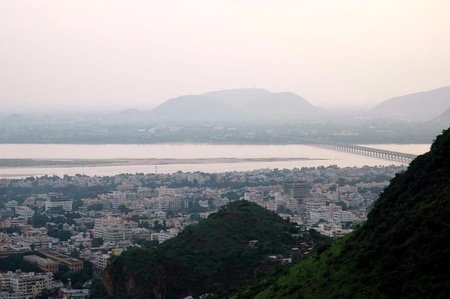
Ludhiana (ਲੁਧਿਆਨਾ)
• Population: 2 Million
• Local Language: Punjabi
• Subdivision: Punjab (State)
• Pronunciation: LU-dhee-yah-nah
• Etymology: Ludhiana is named after the Lodhi dynasty. It was originally called Lodhiana.
Ludhiana is a Punjabi city in the center/east of the state. The city itself isn't on any of the 5 rivers of Punjab, but it's very close to the Sutlej river, the southernmost of the 5. The city was founded by the Lodhi dynasty of the Delhi Sultanate, and the Lodhi Purana Qila still stands in the north of the city. Many of Punjab's major cities went to Pakistan during partition, so Ludhiana became one of the main centers of Indian Punjab. The city has a museum about Punjab and a war museum about Maharaja Ranjit Singh of the Sikh Empire. Maybe I could make a blog about the Sikh Empire AH WHY DO I HAVE SO MANY BLOG IDEAS
Anyways... Some more monuments and sites include the Ludhiana Zoo and Tiger Park, the Gurudwara Manji Sahib in the nearby town of Alamgir, and the historic Serai Laskhari Khan Inn near the aforementioned Gurudwara.
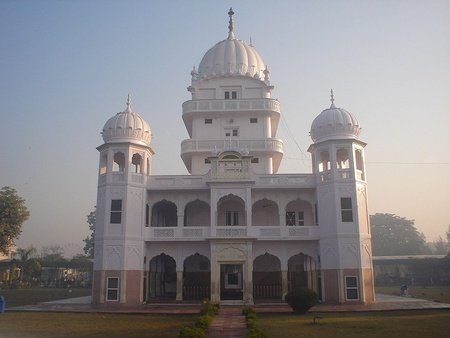
Varanasi (वाराणसी)
• Population: 1.97 Million
• Local Language: Bhojpuri/Hindi
• Subdivision: Uttar Pradesh (State)
• Pronunciation: VAH-ruh-nah-see or VAH-rah-nuh-see
• Etymology: Varanasi comes from the Varuna river and Assi stream, that bounded the city.
Although it's relatively small, Varanasi is a famous city for its significance in Hinduism. Varanasi, formerly known as Banaras, and also known as Kashi, is in Southeastern Uttar Pradesh in on the Ganga river. It is known as the Spiritual Capital of India, since Varanasi is one of Hinduism's 7 sacred cities, but it is also important to religions such as Buddhism, Jainism, and Sikhism. Varanasi is another city where the Kumbh Mela is held like Nashik, (the other 2 are Ujjain and Haridwar). Varanasi is known for its many "Ghats", riverside areas with stairs leading down into the river. Some of these are the Dashashwamedh Ghat, Assi Ghat, and Chet Singh Ghat which is also a palace.
Of course, there are countless temples, but the most famous one is the Kashi Vishwanath Temple.
Other than its religious significance and sites, Varanasi is home to other interesting monuments, like the Jantar Mantar, which is also in Delhi and Jaipur. The Banaras Hindu College is also a very large college in the city.
Finally, an interesting tradition from Varanasi are the huge genealogical records kept by the priests here, known as some of the world's largest family tree records.
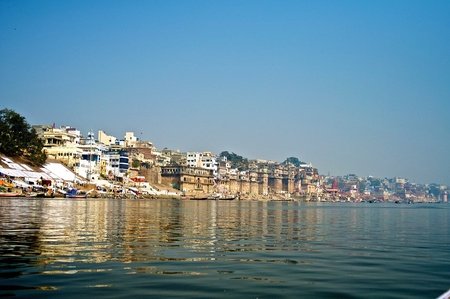
Rajkot (રાજકોટ)
• Population: 2.475 Million
• Local Language: Gujarati
• Subdivision: Gujarat (State)
• Pronunciation: RAHJ-kote
• Etymology: Raj means king and Kot is a common place name suffix
Rajkot is in the Saurashtra or Kathiawar region of Gujarat, which is the peninsula the cuts out of the state if you've seen a map of Gujarat. Located on the Aji river, in the north of Saurashtra, Rajkot is a fast-growing city that is also one of the cleanest in India. Rajkot was an important city in Mahatma Gandhi's life, as he spent some of his childhood and studied there (Gandhi's hometown of Porbandar is also in the Saurashtra region), and Rajkot has a Mahatma Gandhi museum. Near the Gandhi museum, there's also the Watson museum, showcasing the culture of the region, and the Rotary Doll museum showing dolls from around the world.
In the eastern part of the city, you can find the Aji Dam, as well as the Lalpari and Randarda Lakes. In this area, there is also the Pradhyuman Zoological Park.
Rajkot is also undertaking the "Chitranagari Project", to paint the walls in the city and make it colorful and vibrant.
Conclusion
Thanks for reading, please comment if you have any suggestions to improve this series, I'm trying to make each one better. Also, do you want my next blog to be part 4 of this, or another blog?
Okay that's all
Bye

The options are either Part 4 of this or a different one about a language.